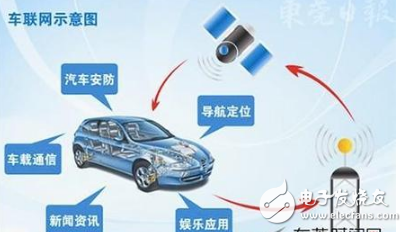As the 5G era approaches, the Internet of Vehicles industry will be erupting. At present, China's car networking industry has entered a new stage of rapid development, technological innovation has become more active, new applications have flourished, and the scale of the industry has continued to expand. At the same time, the industry also has problems such as low penetration rate and complicated operation and profit models.
5G or detonating the car networking industry still has two major problems
As early as a few years ago, relevant government departments have proposed to pay close attention to the revolutionary changes that the Internet has brought to the automotive industry. The Internet of Vehicles has brought a new "opportunity window" to the Chinese automotive industry. In the face of this window of opportunity, more and more companies have tried to catch the express train on the Internet in recent years. As the 5G era approaches, the Internet of Vehicles industry will be ushered in. How do motherboards and New Third Board companies share this cake?
At present, China's car networking industry has entered a new stage of rapid development, technological innovation has become more active, new applications have flourished, and the scale of the industry has continued to expand. According to the Prospective Industry Research Institute's "China's Internet of Vehicle Industry Market Prospects and Investment Planning Analysis Report", the scale of the car networking market in 2015 was 5.04 billion US dollars (about 33 billion yuan), and the market size is expected to reach 33.82 billion US dollars by 2020. About 220 billion yuan). The penetration rate of China's Internet of Vehicles increased from 4.8% in 16 years to 18.1% in 2020; the number of Internet-connected users reached 44.1 million by 2020.
A number of policies push the car network on the right trackFollowing the State Council’s release of “Made in China 2025†and “Guidance on Actively Promoting “Internet+†Actions†in 2015, the car networking industry has become an important part of the “Made in China 2025†and “Internet Plus†development strategies. However, at present, the domestic car networking industry is very chaotic, and it is urgent to introduce relevant policy standards for standardized management.
Data show that as of the end of June this year, China's car ownership reached 205 million, and the driver of the car was 328 million. Along with the increase in car ownership, problems such as road congestion, environmental pollution, and inadequate public facilities have become increasingly prominent. The emergence of car networking has promoted the integration and upgrading of industries such as automobiles, transportation, information and communication, and related industries and values. The reshaping of the chain system is of great significance.
Development status of the car networking industryAs the most promising application field in the Internet of Things, although it has experienced a long period of development, the development process of the Internet of Vehicles has been relatively slow. Even with the support of national policies, it is difficult to develop rapidly because of many objective reasons.
The industry currently has these major problems: (1) low penetration rate. Although there is a broad market space, due to the separation of the automotive industry, the standard is not uniform, and the lack of killer applications, the penetration rate of the Internet of Vehicles is always at a low level, the function is relatively simple, and it is unable to achieve intelligent level.
(2) The operation and profit model are complex. Diversified development is a good thing, but if there is an absolute core, then diversity will become chaotic.
The challenges facing the car networking industryFirst, cross-departmental collaboration needs to be deepened, involving multiple departments such as industrial credit, development and reform, public security, and transportation. Second, core technologies need to be broken. The high-end components of high-end sensors, new automotive electronics, and vehicle operating systems are weak in competitiveness, and technology accumulation still needs to be strengthened. Third, industrial development faces challenges. The gap between ADAS, sensor and radar, vehicle chip and other industrial fields is too large. It is necessary to make breakthroughs in key areas to narrow the gap and enhance industrial competitiveness. Fourth, there are hidden dangers in security issues. The vehicle network security protection system and security management system are still not perfect, and the data security and personal information protection issues are prominent. In particular, the security protection issues affecting driving control behavior need to be strengthened.
What opportunities will 5G bring to the Internet of Vehicles industry?The first is the penetration problem. The emergence of 5G solves the problem of speed and capacity of data transmission. Large files can also be transmitted within a few seconds. The accuracy of car navigation is greatly improved, and the penetration rate and penetration rate of vehicle systems will also be improved. It can also reduce traffic accidents caused by drivers looking at their mobile phones.
From the perspective of autonomous driving operations, 5G also provides some new possibilities. At present, for domestic 5G, a complete layout from research to application is being formed, and industry standards are gradually coming to the fore. The development speed of China's automatic driving is no less than that of the mainstream countries in the world. We believe that the arrival of 5G will be faster than we expected.
At present, China's car networking market connects a number of industries such as automobiles, travel, energy, logistics and commercial real estate. This may be the biggest positive impact on society in the next 20 years. It will create a trillion-dollar economy.
Low-voltage Reactive Power Compensation Cabinet
Low-Voltage Reactive Power Compensation Cabinet,Low Voltage Intelligent Reactive Power,Low Voltage Products Reactive Power,Ac Low Voltage Reactive Power Compensation Cabinet
TRANCHART Electrical and Machinery Co.,LTD , https://www.tranchart-electrical.com